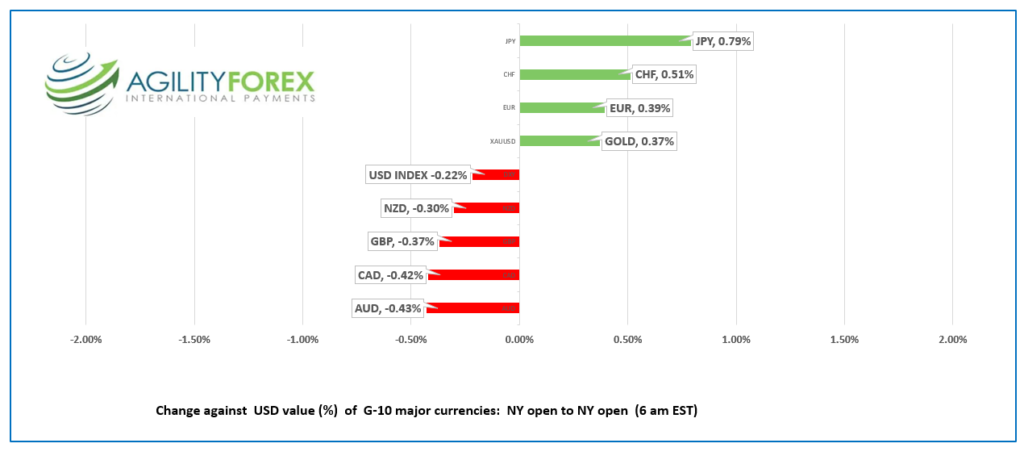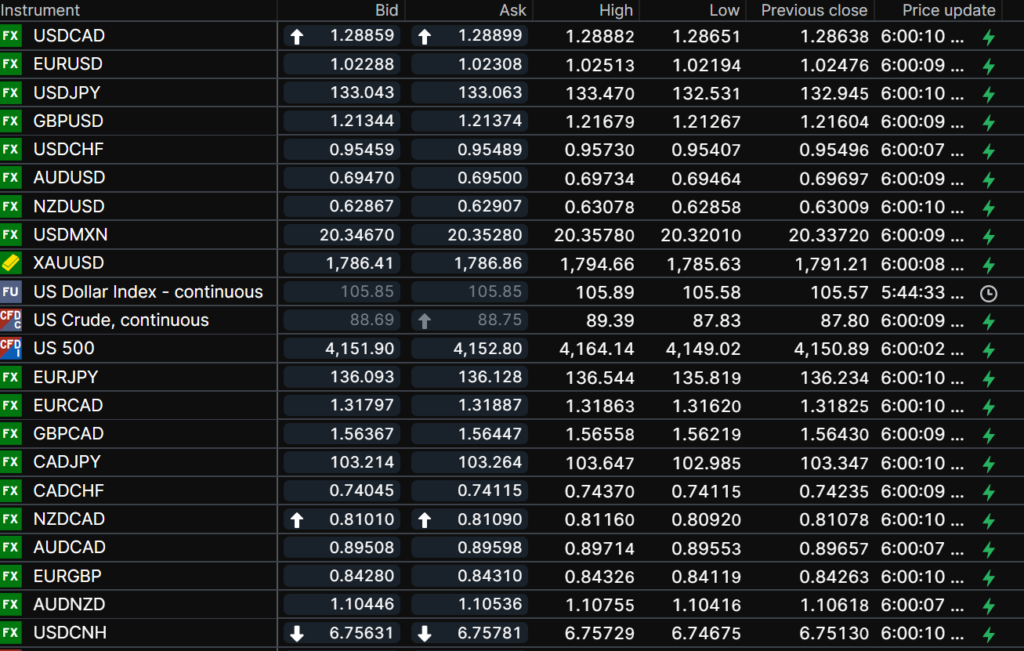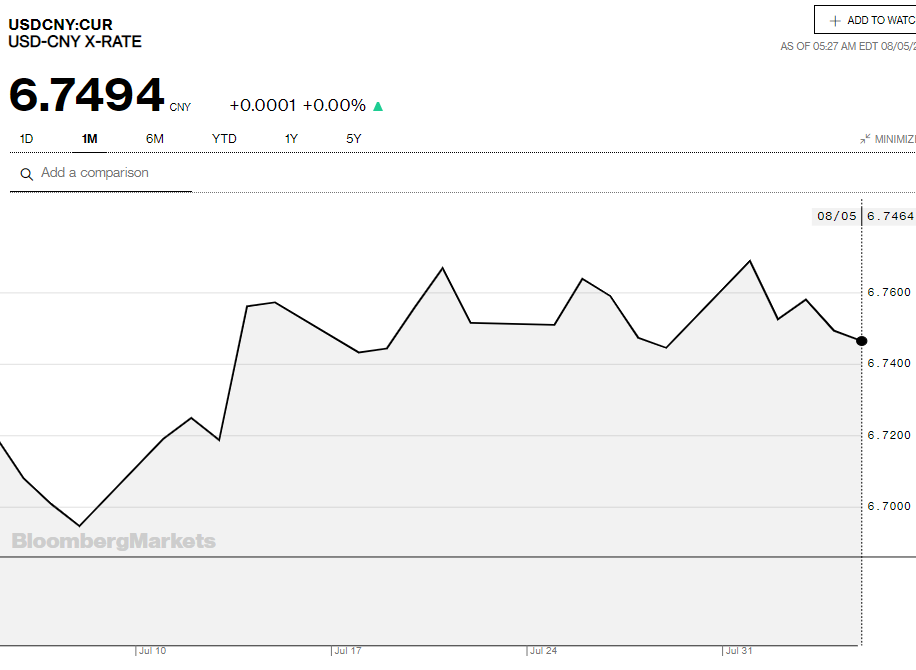
Photo: ClipartLibrary.com
- Diplomatic revolving door over China actions
- US NFP and Canada jobs data ahead
- US dollar opens mixed, Safe-haven currencies outperform
FX At A Glance

USDCAD Snapshot: open 1.2885-89, overnight range 1.2865-1.2887 close 1.2864
USDCAD is trading with a bullish bias due to broad US dollar demand ahead of the US and Canadian employment reports, sinking WTI oil prices, and a sprinkling of negative risk sentiment around China in the mix.
WTI dropped to $87.83/barrel overnight, after starting the week at $98.50/b. Sentiment is negative due to fears of lower demand due to US recession risks from higher interest rates in addition to slowing growth in China. Increased crude production from Libya and Opec’s miniscule production increase of 100,000 b/pd exacerbated the fears although Russian sanctions are in play and not going anywhere. WTI is vulnerable to further losses to $60.00/b on a decisive breach of support in the $85.00-$88.00/b area.
Canada lost another 30,600 jobs in July on top of the 43,200 that disappeared in June. Analysts expected a 20,000 gain. The week Canadian data combined with the sharply higher US NFP results lifted USDCAD from 1.2888 to 1.3943.
USDCAD technical outlook
The intraday USDCAD technicals turned bullish with yesterdays break above 1.2860, and are looking for a move above resistance in the 1.2950 area to extend gains to 1.2990. A move below 1.2850 argues for more 1.2800-1.2900 consolidation.
For today, USDCAD support is at 1.2850 and 1.2810. Resistance is at 1.2910 and 1.2950. Today’s Range 1.2870-1.2960
Chart: USDCAD 4 hour

Source: Saxo Bank
G-10 FX recap and outlook
Diplomats are coming and going from various embassies to their host country’s government offices as western and Chinese officials spar over China’s virtual blockade of Taiwan.
The US summoned the Chinese ambassador to chastise him over the aggression in the Taiwan Strait. China retaliated by announcing sanctions on Nancy Pelosi and her family but didn’t say what the sanctions included. “No wonton soup for you!”
China also summoned European diplomats to protest the G-7 statement about China’s actions against Taiwan.
A Canadian diplomat, Jim Nickel, was called on the carpet at China’s Foreign Ministry so Vice Foreign Minister Xie Feng could scold him on the G-7 statement. Mr Nickel was told to “immediately correct its mistakes or bear all consequences” for its mistakes on Taiwan. Mr Nickel was not arrested for spying, which is Beijing’s favored tactic.
The diplomatic shuffle served to underscore negative risk sentiment, leading to higher gold, Swiss franc, and Japanese yen prices.
US employment numbers hot the lights out. The 528,000 jobs gained in July was over double the 250,000 predicted. The unemployment rate ticked down to 3.5% while average hourly earnings rose 0.5% m/m compared to 0.3% m/m.
Today’s data takes on a heightened sense of importance because Fed Chair Jerome Powell said the Fed was “data dependent.” Traders seem to have forgotten that the Fed is always data dependent. They exist to formulate monetary policy based on the outlook for inflation and employment based on economic data inputs.
The data clears the way for further aggressive Fed rate hikes and that spooked markets. The US 10-year Treasury yield jumped to 2.808% from 2.67%, while S&P 500 futures dropped 0.80% in the wake of the data.
EURUSD consolidated yesterday’s gains in a 1.0219-1.0253 range, supported by EURGBP demand, then plunged to 1.0163 after the NFP data.
GBPUSD traded with a negative bias in a 1.2127-1.2168 range following yesterday’s dovish Bank of England rate hike and doom and gloom outlook. Prices collapsed to 1.2048 when NFP was released.
USDJPY spiked to 134.82 from 133.47 pre data, underpinned by the jump in the US 10-year Treasury yield.
AUDUSD and NZDUSD plunged on the back of broad US dollar strength.
FX open, high, low, previous close as of 6:00 am ET

Source: Saxo Bank
China Snapshot
Today’s Bank of China Fix: 6.7405, previous 6.7636
Shanghai Shenzhen CSI 300 rose 1.35% to 4,156.91
Chinese stocks rally on reports the government will raise infrastructure spending by 11%
Chart: USDCNY 1 month

Source: Bloomberg





